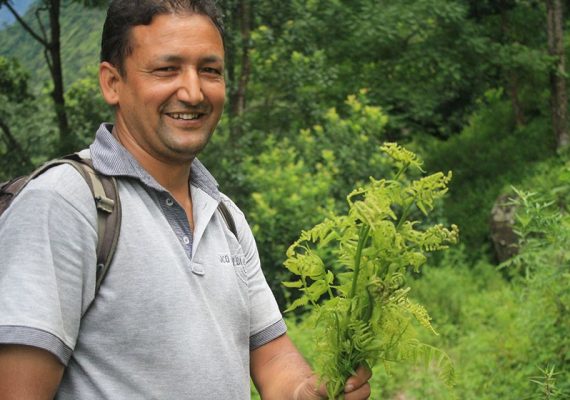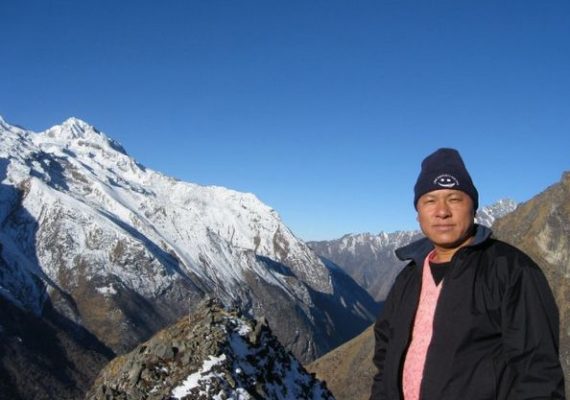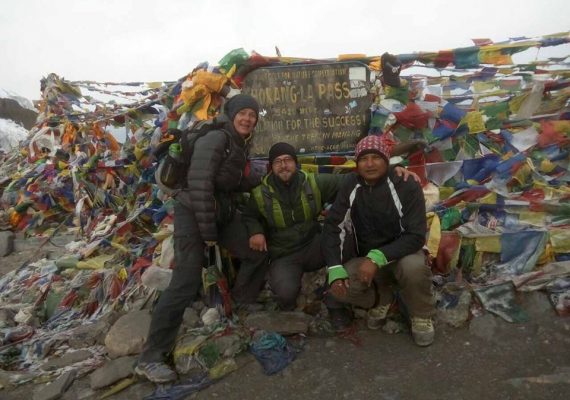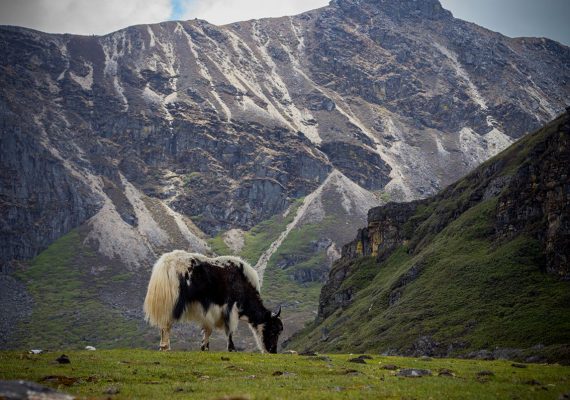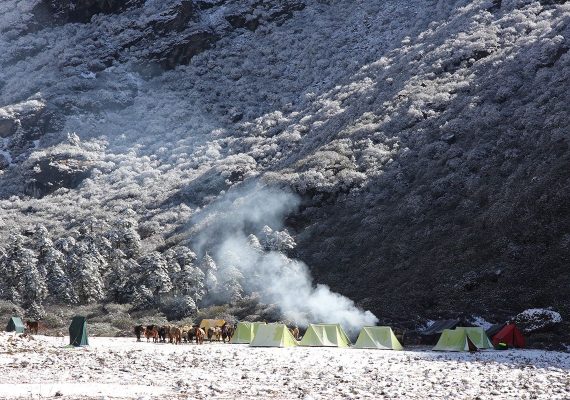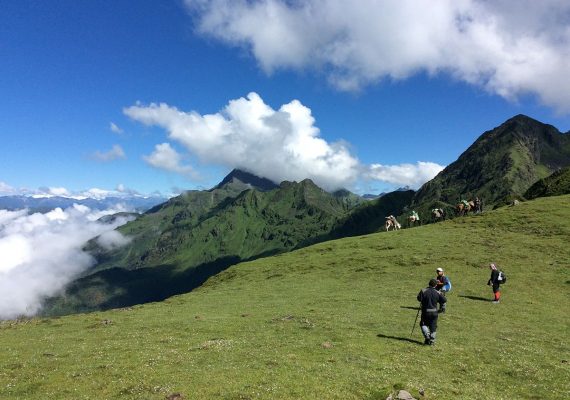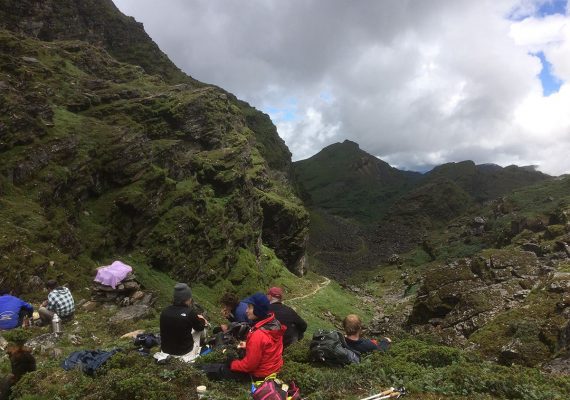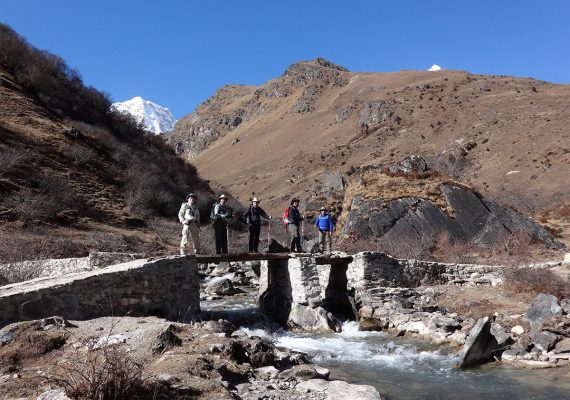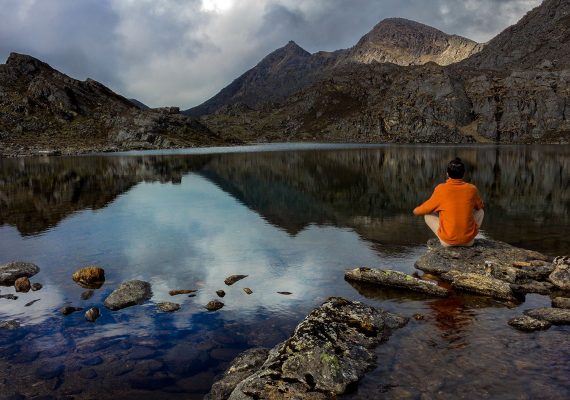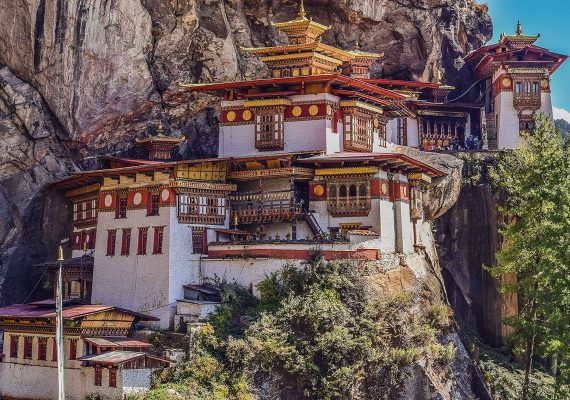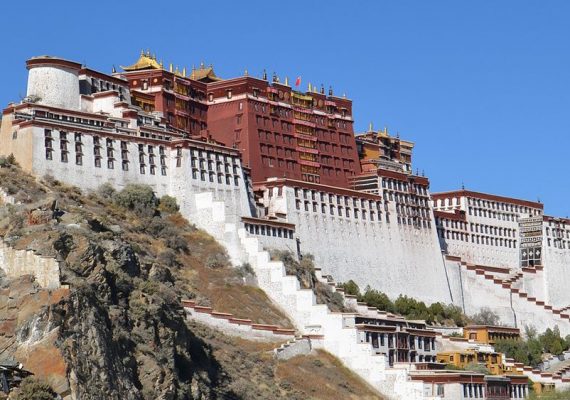Menu
Menu
Tour Details
Walking along the farm road is unappealing; so instead we recommend a second acclimatisation hike at Chele La near Paro, climbing high during the day to aid acclimatisation, then return to Paro
Paro is situated in a beautiful valley at 2280 metres and is a fitting introduction to this charming kingdom. Your guide will meet you and take you to your hotel. There should be time for a stroll around Paro town before lunch. In the afternoon you can visit the impressive Paro Rinpung Dzong, one of the finest examples of Bhutanese architecture. Nearby you can also visit the 7th century Kyichu Lhakhang, a temple of historical significance and one of the most sacred shrines in Bhutan. Overnight in Paro.
To acclimatise for the trek, take a day walk to the ‘Tiger's Nest’, the sacred Taktshang monastery which clings to the rock face 900 metres above the valley floor. Guru Rinpoche is said to have flown to the site riding on a tigress. He subsequently meditated here for three months. It is one of Bhutan’s most holy sites and draws pilgrims not only from Bhutan but also from neighbouring Buddhist countries. You can have lunch at the Taktshang cafeteria from where you get a spectacular view of the monastery. Nearby you can also visit the 7th century Kyichu Lhakhang, a temple of historical significance and one of the most sacred shrines in Bhutan. On the way back you can visit Dumtse Lhakhang, a temple built by Thangtong Gyalpo, the iron bridge builder. Overnight in Paro.
Please note: Originally it was a 6-hour walk to the first day’s camp at Shana, but now a farm road has been built and the journey can be done by vehicle in a couple of hours. In theory it is possible to drive to the end of the farm road and hike to the second day’s camp at Soi Thangthangkha all in one day, but this creates difficulties, as there is then not sufficient time to acclimatise. Walking along the farm road is unappealing; so instead we recommend a second acclimatisation hike at Chele La near Paro, climbing high during the day to aid acclimatisation, then return to Paro. The next morning drive to the camp at Shana and start the hike from there giving you more time to adjust to the altitude before you climb towards base camp at Jangothang. This is our recommended approach to the start of the trek.
Today you can do a second acclimatisation hike. First drive about an hour and a half to Chele La pass at about 3900 metres where you will have a splendid view of the Himalaya range, weather permitting. From the road you can walk up the incline around 2 hours towards Gung Karpo La (4300m), continuing above the tree line along the ridge that divides Paro and Haa valleys. Here if the day is clear you will see even more breathtaking views of the snowcapped mountains, including Mount Jomolhari and other further peaks such as Kanchenjunga. Walk down the hill through rhododendron and hemlock forest towards Kila Gompa, a nunnery inhabited by about 30 nuns who live a life of contemplation and seclusion, with daily prayer and spiritual practice. The community is one of the oldest of seven nunneries in Bhutan and was initially established in the early 9th century as a meditation site. The main temple houses ancient statues of Chenrezig and Guru Rinpoche, among others. After visiting the nunnery you can return to the car, which takes around 15 minutes.
This evening you can sort out your luggage for the trek. Anything you don’t need to carry with you will be driven safely to Thimphu to await your arrival. Overnight in Paro.
Early in the morning drive about 2 hours through farm road to Shana, where you will start your trek. We ascend through the river valley and beautiful pine and rhododendron forests. Sadly much of the forest has been cut to make way for electricity to be run to Jangothang and Lingshi - the sight of fallen trees is a reminder of the cost of progress. We stop for lunch by the first bridge over the river and then continue to follow the right bank for a couple of hours until we reach a junction of two valleys, marked by a stupa. Here we turn north towards Mount Jomolhari, which can be seen from the top of the valley. Our camp will be at 3680 metres. (19 km, 8 to 9 hours). Overnight in camp
The path passes a small, border army post where the valley begins to widen again and we leave the forest behind. Enjoy views of snow-capped peaks, high mountain ridges and yaks and yak herders. We will stop for lunch in a small hamlet where the family will welcome us. You can also stop to visit a small local school at Soe, before reaching Jangothang. From here it is not far to reach camp, which is in a beautiful grassy meadow beneath a ruined fortress at the base of Mount Jomolhari (4040 m). (19 km, 6 hours). Overnight in camp
It’s possible to walk to Tsophu or hike in various directions: towards Mount Jomolhari and its subsidiary to the west, Jichu Drake to the north and unclimbed summits and ridges to the east. Overnight in camp.
The trail climbs gradually and then more steeply to Nyeli La (4850 m). On the way you will be rewarded when you stop for breath with tremendous views toward Jomolhari and Jitchu Drake. If the weather is clear, Lingshi Dzong can be clearly seen as we descend into the Lingshi basin, and Tserim Kang with its glaciers can be seen to the north. Follow the ridge for a long way until you drop through the forests to our camp just outside Lingshi village beside a stone shelter at 3915 metres. (19 km, 7 to 8 hours). Overnight in camp
A day’s excursion to Tsekha (Lahe), the base camp of Jichu Drake mountain where it is possible to see blue sheep and musk deer. (Altitude about 4500 m) If you prefer you can explore the village and visit the local school. Lingshi Dzong, which sits proudly on a ridge above the village, was unfortunately badly damaged in the 2011 earthquake and is under renovation so it is not possible to visit currently. Overnight in camp.
The trail ascends to the Yali La Pass (4820 m), from where Mount Jomolhari, Tserim Gang and Masa Gang can be seen on a clear day. We descend to our campsite which is situated at about 3815 m. (6 to 7 hours). Overnight in camp.
The path follows the Thimphu Chu (river) and through forests with rhododendrons and waterfalls, before climbing to the ruins of Barshong Dzong. We used to camp near a stone shelter just below the ruined fortress, but now a school has been built here so we continue to follow the Thimphu Chu downhill for a couple of hours through dense rhododendron forest before emerging into pastureland at Domshisa where we can camp. (Altitude 3400 m, 18 km, 7 to 8 hours). Overnight in camp.
From Domshisa we climb for about an hour to a mountain meadow and over a small pass. A new farm road has been built along this stretch, so we have to walk for about 3 hours today along the rough road until we join the original trail just before the end of our trek. From here it is about an hour along the trail to Dodena where a vehicle will be waiting to collect us for the drive to Thimphu. (9 km, 5 hours for the walk, 1 hour for the drive). Overnight in Thimphu.
We will visit Changangkha temple, perched on the hilltop overlooking the town. Devotees flock throughout the day to circumambulate and turn the prayer wheels. The temple also contains beautiful wall paintings and hundreds of religious scriptures written in gold. Then you can visit the School of Traditional Arts, browse the striking collection of intricate textiles at the National Textile Museum or visit the Folk Heritage Museum. Tell your guide what takes your interest.
After lunch drive approximately 3 hours to the old capital, Punakha, via Dochu La pass at 3050 metres, where we will stop for a hot drink and enjoy spectacular panoramic views of the Eastern Himalaya ranges. You will notice the change of climate and vegetation as we approach low-lying Punakha at 1250 metres. Take a pleasant walk for an hour or so across the terraced fields of Sopsokha village to Chimi Lhakhang (Temple of Fertility) built in the 15th century by the ‘Divine Madman’ (Lama Drukpa Kuenley). Overnight in Punakha
In the morning hike an hour or so up to Khamsum Yuelley Namgyel Chorten, high on the hill across the other side of the valley. The temple is 30 metres tall and is dedicated to the fifth King. From the top you will see a beautiful view of the valley and surrounding villages. On the way back visit the imposing Punakha Dzong, “Palace of Great Happiness”. Built in 1637, it is strategically placed at the confluence of two rivers, the Po Chu and the Mo Chu. Afternoon we return to Paro, a drive of approximately 4 hours. Then you can visit a local farmhouse for tea or dinner allowing you to experience traditional Bhutanese village life. Take the opportunity to try the restorative properties of a hot stone bath! Overnight in Paro
Early in the morning your guide will accompany you to the airport to see you off onto your flight and wish you Tashi Delek (goodbye and good luck).
